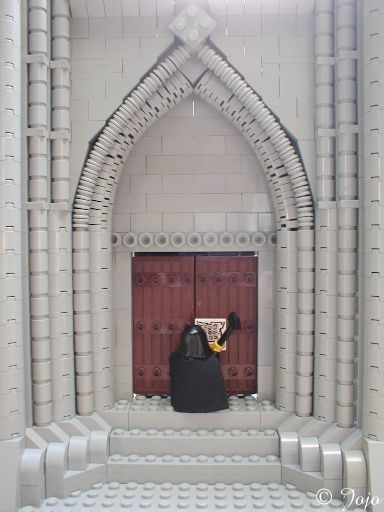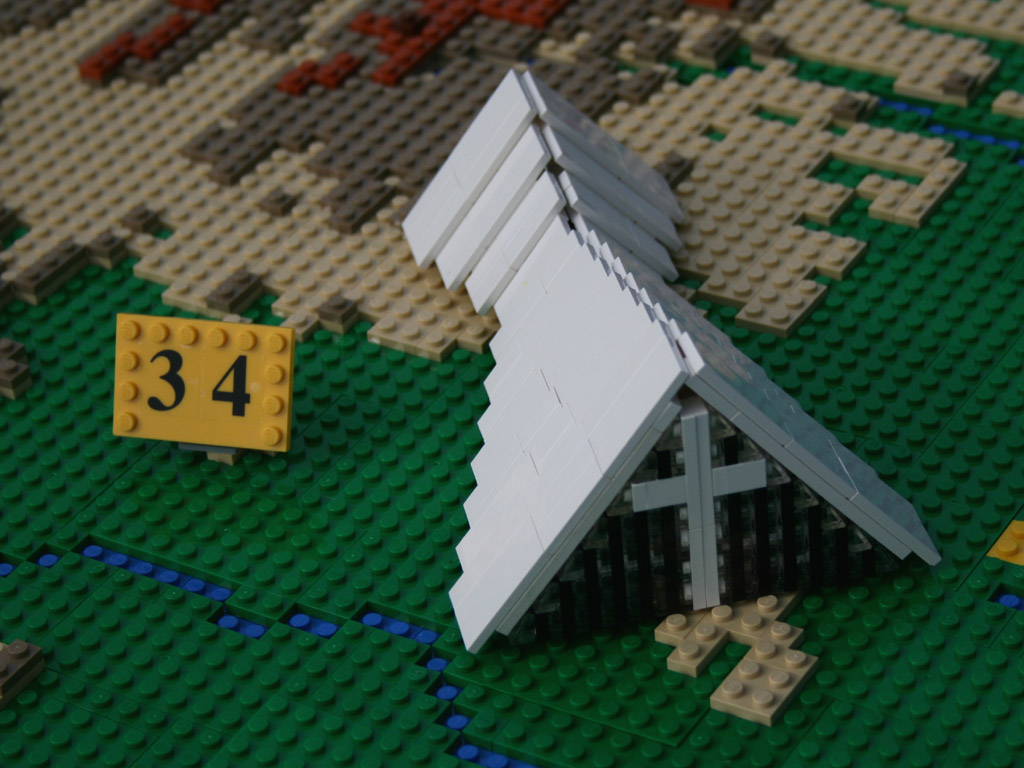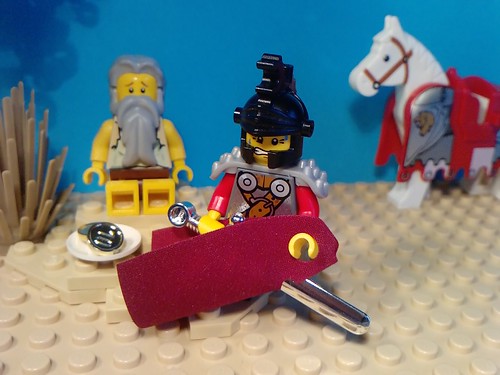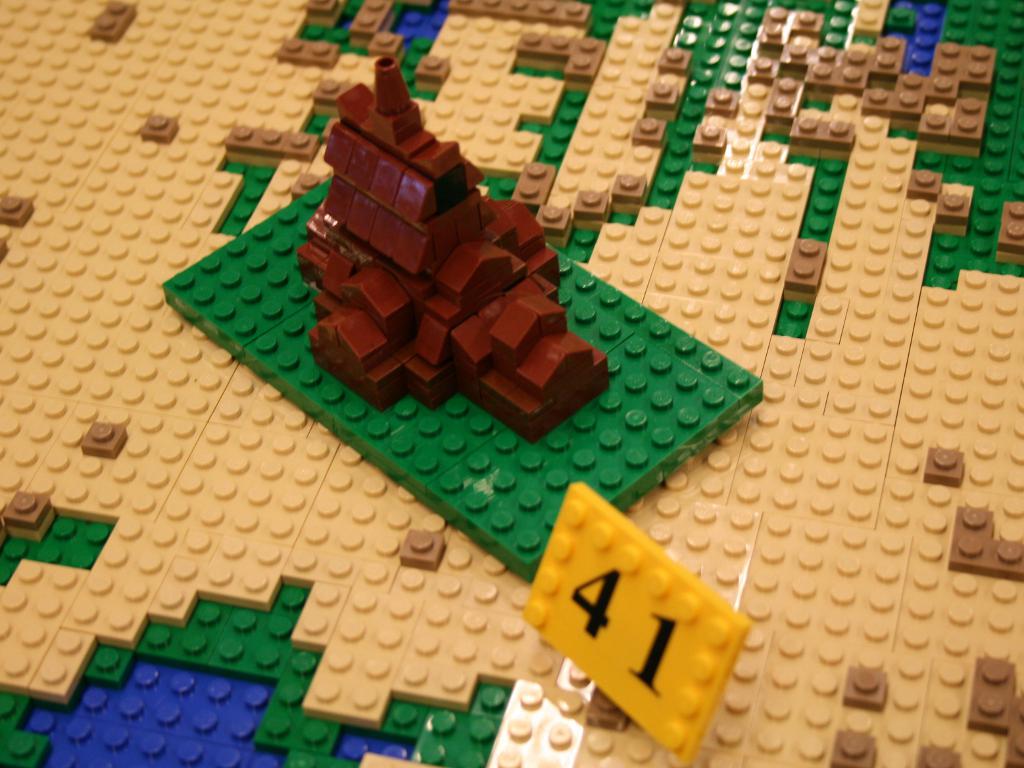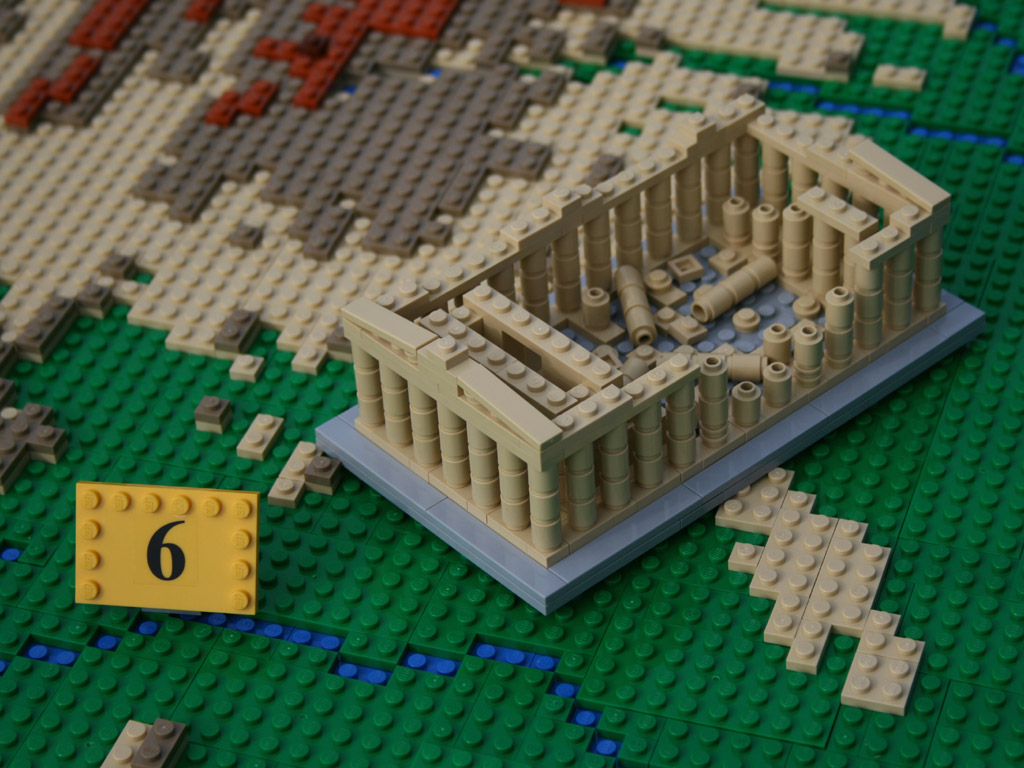I've been very remiss in covering recent additions to
The Brick Testament. Brendan has been systematically going back and rebuilding or adding to stories from
Genesis. Personally, I'd like to see him take on some of the material he hasn't already covered, particularly some of the less-narrative sections like the Psalms or the Prophets.
 Abram Impregnates a Slave Girl
Abram Impregnates a Slave Girl tells the story of Sarai, Hagar and Ishmael. From a LEGO standpoint, I really like the scene above with the clever hammock design, the skateboard ramps forming the tent, the variety of molded and brick-built animals, and the implied action in the distance and around the edges. When the same scene is mirrored three scenes later, the look on Sarai's face is perfect. I've never been a huge fan of the 1x2 tile-as-pregnant-belly solution, but I don't know a better way to imply a pregnant minifig.
 God Wants Part of Penis Cut Off
God Wants Part of Penis Cut Off tells about the initiation of circumcision. Some humorous scenes here with the looks on the faces of those being circumcised, and also lying down in the background. I'm not a fan of the dagger. I know, I know, it's an official piece from the Prince of Persia line, but it just doesn't look like LEGO to me.
 God Drops By for a Meal
God Drops By for a Meal tells of three strangers who pay a visit to Abram. Those palm trees in the distance are very simple and yet effective when in soft focus. The larger tree close to Abram's tent doesn't work as well when it is in sharp focus here as opposed to the soft focus seen in some of the earlier stories. I'm not sure if I like the molded dog modified to be a calf - I think that Brendan had a better brick-built calf design in the past. Kind of odd but humorous that God isn't facing Abram as he's talking to him while he eats.
